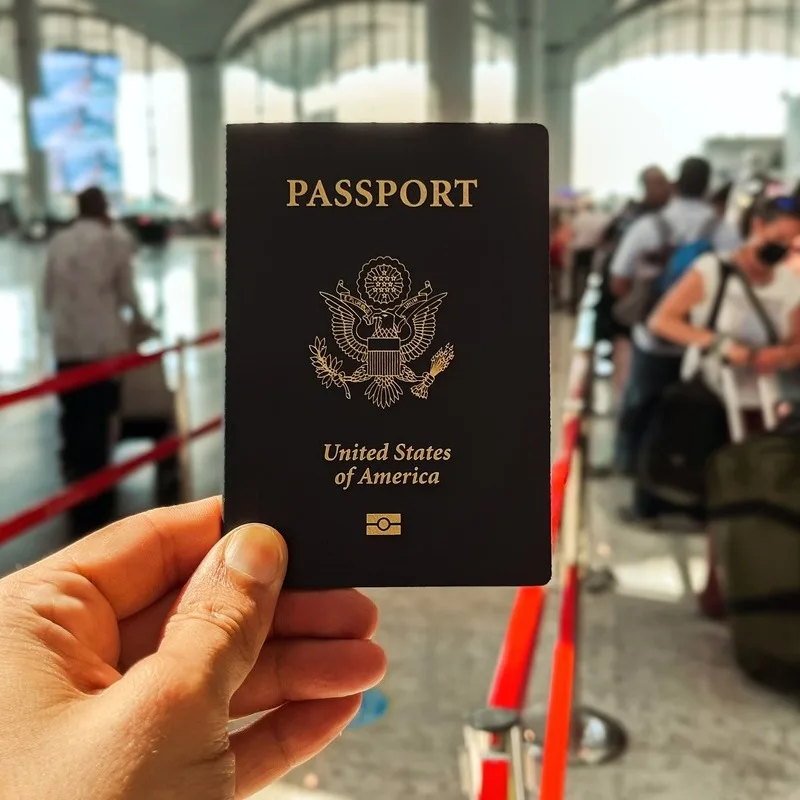In case you haven't noticed while traveling in the post-pandemic era, exploring new destinations has gotten a lot easier for American citizens. Other than not being subject to health checks, they now enjoy fast-track entry across several countries, as the usual bureaucracy involving border control, including questioning and passport stamping, becomes a thing of the past:
Are We Headed To Fully Digital Borders?

Whether they're landing in the Mexican Caribbean or at certain entry points in Europe, Americans are now eligible to use e-Gates, a privilege that had up until recently not been extended to foreign visitors. Essentially, it means they can simply scan their way into a new country, usually without speaking to an agent or waiting in a long line.
Called an ‘Automated Border Control System', they have proved to be a valuable tool in regards to border strengthening, helping screen passengers in a much safer and standardized way and ensuring they are properly registered upon entry and exit. They are also cost-effective and ensure operations run smoothly even when there are staff shortages.

In other gates, e-Gates are a much more reliable alternative to traditional manual checks, and they have been known to drastically reduce waiting. In Cancun, where installation took place this year, Americans can expect to enter Mexico ‘within half a minute on average' of reaching customs, as opposed to the half-hour or above before installation took place.
Where Can Americans Use e-Gates In 2023?
Top 5 Travel Insurance Plans For 2023 Starting At $10 Per Week
Easily Earn Points For Free Travel

Numerous countries worldwide have invited Americans to use e-Gates after deeming U.S. nationality a low-risk factor for irregular migration. Besides Mexico, U.S. passport holders headed to Europe are free to check themselves in entering through specific checkpoints in Portugal, France, Italy, and the United Kingdom, only to name a few.
This is a privilege not granted to all: in general, only citizens of developed and high-income countries can use e-Gates in these European spots. The goal is to ensure Americans, as well as Canadians, Brits, Australians, New Zealand nationals, and other tourists arriving from partner countries to make it through the border quicker and without unnecessary formalities.

In France, e-Gates open to Americans can be found at all major points of entry, including Charles de Gaulle and Orly, France's busiest airports, while the U.K. has included Americans in their list of manual check exemption in up to 15 hubs. In Italy, Americans aged 14 and older can use the fast-track lane in Rome's Leonardo da Vinci Airport and at least five other airports.
In Australia, foreigners hailing from a select list of countries are eligible for e-Gate usage as long as they carry a valid ePassport – with a small camera symbol at the bottom of the front cover – and are at least 16 years of age. Malaysia no longer processes Americans manually as well: as of January 30, they are among the newly approved to access e-Gates at Kuala Lampur.

It is worth noting e-Gates may not be available in all airports or international train stations or that Americans may not be eligible to self-check-in at all entry points. You are advised to check e-Gate rules at your airport of arrival, as well as eligibility criteria in advance, or you may be required to join the regular immigration queue.
No More Passport Stamps

For most travelers, border crossings have always been a huge inconvenience. When landing in a different country, the last thing they want is being held up at a border, waiting several long minutes, if not hours during the peak season, until they are able to speak to a border agent, who will then assess whether they should be granted entry or not.
Other than being unpleasant, it can be anxiety-inducing, as you never know who will greet you upon arrival, and some suspicious officers can be quite thorough in their questioning. Of course, Americans still enjoy visa-free entry in over 140 countries, and they are usually whisked through the border, but the process could be streamlined further.

A digital border means staff can be allocated elsewhere and resources best utilized, though according to Perry Flint, spokesman for the International Air Transport Associated, the goal is ‘to go a lot further and get into contactless travel‘ eventually.
Effectively, it means the era of customs forms, the constant worrying about stamps filling out valuable passport pages, and grueling interviews with border officers are coming to an end, and e-Gates are only the beginning.
The Travel Off Path Advantage: Your Travel Toolkit
U.S. Travel Advisory Checker
An easy tool to check all the latest travel advisories from the U.S. State Department.
Entry Requirements Checker
An easy tool to check all the entry requirements for your destination.
The Upgrade Newsletter
Unlock travel tips, hot destination insights, and exclusive flight deals.
Join Our Community
With over 25,000 members on Facebook!
Subscribe To Our Latest Posts
Enter your email address to subscribe to Travel Off Path's latest breaking travel news, straight to your inbox.

Ian
Friday 3rd of February 2023
My line at CdG took 1 and 1/2 hours!
Nico
Thursday 2nd of February 2023
All good for privileged American travellers; what about the rest of the world community travelling to the States? In 3 words, " IT'S A NIGHTMARE! They're still demanding proof of covid vaccination;after several traumatic incidents at American airports I now always fly direct to Central and South America countries, much less stress and hassle.